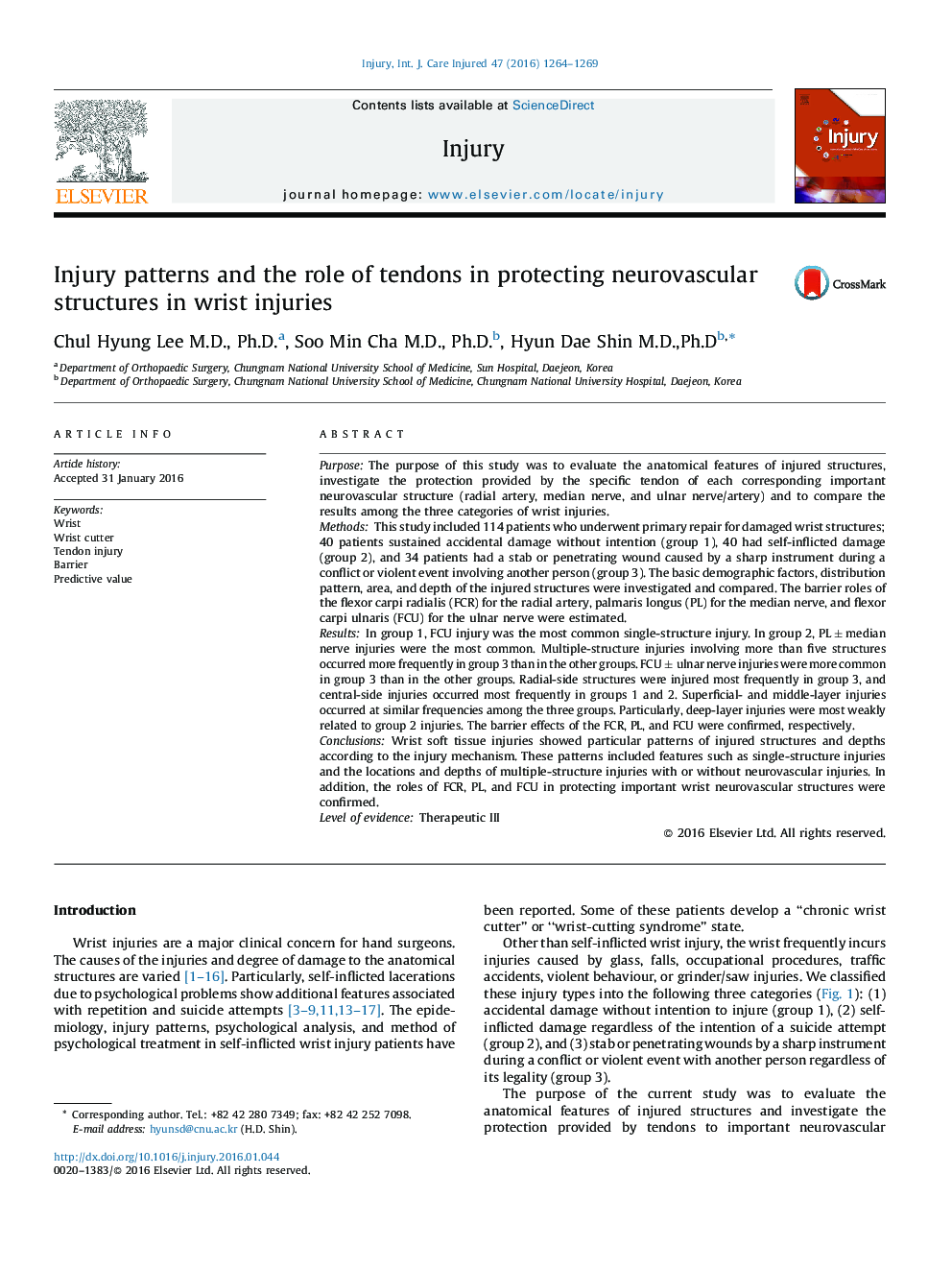| کد مقاله | کد نشریه | سال انتشار | مقاله انگلیسی | نسخه تمام متن |
|---|---|---|---|---|
| 3238844 | 1205975 | 2016 | 6 صفحه PDF | دانلود رایگان |
PurposeThe purpose of this study was to evaluate the anatomical features of injured structures, investigate the protection provided by the specific tendon of each corresponding important neurovascular structure (radial artery, median nerve, and ulnar nerve/artery) and to compare the results among the three categories of wrist injuries.MethodsThis study included 114 patients who underwent primary repair for damaged wrist structures; 40 patients sustained accidental damage without intention (group 1), 40 had self-inflicted damage (group 2), and 34 patients had a stab or penetrating wound caused by a sharp instrument during a conflict or violent event involving another person (group 3). The basic demographic factors, distribution pattern, area, and depth of the injured structures were investigated and compared. The barrier roles of the flexor carpi radialis (FCR) for the radial artery, palmaris longus (PL) for the median nerve, and flexor carpi ulnaris (FCU) for the ulnar nerve were estimated.ResultsIn group 1, FCU injury was the most common single-structure injury. In group 2, PL ± median nerve injuries were the most common. Multiple-structure injuries involving more than five structures occurred more frequently in group 3 than in the other groups. FCU ± ulnar nerve injuries were more common in group 3 than in the other groups. Radial-side structures were injured most frequently in group 3, and central-side injuries occurred most frequently in groups 1 and 2. Superficial- and middle-layer injuries occurred at similar frequencies among the three groups. Particularly, deep-layer injuries were most weakly related to group 2 injuries. The barrier effects of the FCR, PL, and FCU were confirmed, respectively.ConclusionsWrist soft tissue injuries showed particular patterns of injured structures and depths according to the injury mechanism. These patterns included features such as single-structure injuries and the locations and depths of multiple-structure injuries with or without neurovascular injuries. In addition, the roles of FCR, PL, and FCU in protecting important wrist neurovascular structures were confirmed.Level of evidenceTherapeutic III
Journal: Injury - Volume 47, Issue 6, June 2016, Pages 1264–1269
